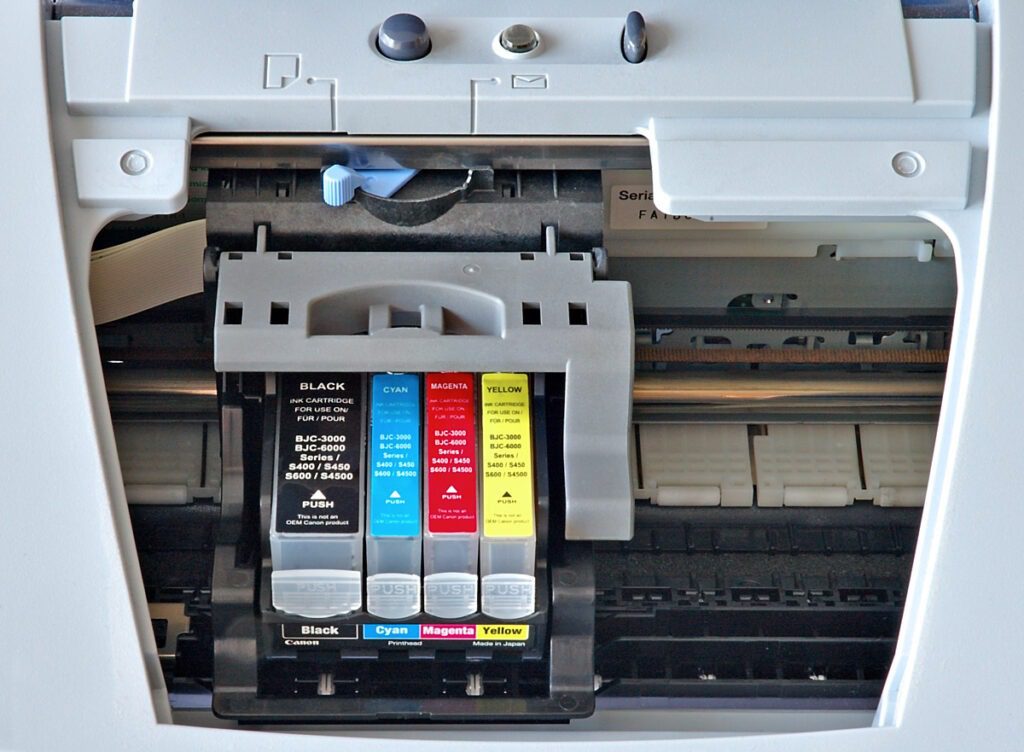
Production inkjet technology has been around for nearly two decades but it didn’t take off immediately. In the early days, this printing technology was found useful in addressing, coding, and lottery applications. Over a period of time, the technology evolved in both speed and resolution; high-speed production inkjet soon became a technology of choice for the printing of transactional documents such as consumer statements or bills for banks, financial services, utility service providers, insurance service providers, telecom companies, etc.
Today, with significant advances in color printing, production inkjet technology is expanding into new spheres including transpromo, personalized direct mail, marketing collaterals, and book publishing. The technology continues to evolve and is opening fresh opportunities in various other high-volume applications as it offers the advantages of digital productions such as workflow automation, electronic collation, and just-in-time manufacturing.
Continuous Feed Inkjet Emerging As Highly Sought After Technology
According to a report by Fortune Business Insights, the global digital production printer market is projected to reach US$ 5,939 Mn by 2025. From US$ 2,352 Mn in 2017, it’s projected to register a CAGR (Compound Annual Growth Rate) of 12.6% till the end of 2025. Continuous feed inkjets in 2017 had a market share of 25.2%; they have been more popular than cut sheet inkjets. Market trends indicate that the production printer market is gradually shifting from offset technology to digital.
InfoTrends’ ‘U.S. Production Printing and Copying Market Forecast: 2016-2021’ estimates that impressions produced by inkjet devices are likely to increase from 122 billion in 2016 to 246 billion by 2021 at a healthy CAGR of 14.9%. This growth in the adoption of production inkjet technology is occurring despite the fact that sheet-fed electrophotographic digital printing is also increasing at a healthy rate.
Why Is Production Inkjet Technology Enjoying Dramatic Growth
As per the Association for Print Technologies (formerly NPES), the page volume for continuous feed inkjet devices increased at a high CAGR of 73% between 2008 and 2016. While this growth in itself is phenomenal, production inkjet adoption driven by new innovations in the post-2016 period has been even more impressive.
Besides sheet-fed inkjet developments, advancements in roll-fed technology, high printing speed, wider web widths, and customized communications, production inkjets gained popularity mainly because they can generate offset-quality prints in the short-run jobs. Thus short-run jobs allow for quick-turn job delivery with seamless software integration and digital workflows. The running cost for digital printing, even for really short production runs, reduces significantly in the process.
A continuous feed inkjet, for instance, can adjust run lengths in printing manuals, books, magazines, etc. to practically any number of pages, thus helping reduce waste and associated costs when compared with offset. Often, one inkjet can replace multiple presses, thus helping businesses do more in less time while reducing cost overheads and floor area requirements.
As per InfoTrends’ ‘U.S. Application Forecast, Keypoint Intelligence’ report, the top three applications by page volume today are books, consumer statements, and direct mail. By 2021, these three applications alone will account for 41% or 286 billion impressions. In all of these three segments, print service providers focus a great deal on achieving faster turnaround times, lower costs, and better manufacturing quality. Over the last few years, print service providers have been shifting from offset to high-speed production inkjet technology for these three applications.
Several companies have also begun using production inkjets for printing marketing materials, calendars, manuals, diaries, maps, etc. due to the advantages of color inkjet and the numerous substrates available these days.
Stronger Growth in the Years Ahead
High-speed production inkjet printing is now considered a viable option. The technology is shaking up the print industry; industry experts are predicting stronger growth in the years ahead as the output from high-speed color inkjets is continually improving and paper choices to are expanding at a rapid pace.
With faster turnaround times, stunning image quality increased media latitude, lower cost per piece compared to toner, ability to customize the output by using variable data printing, and various built-in operational efficiencies, production inkjet systems of the day can help overcome numerous manufacturing challenges. For instance, publishers can reduce inventory, grow titles, optimize demand fulfillment, and boost manufacturing efficiency; retailers and marketing companies can optimize production, enhance relevancy, and improve response rates. When it comes to high volume variable print manufacturing, production inkjet is truly a champion. However, production inkjet is a bit more expensive as everyone can’t afford it. So regular printers like Epson, Lexmark, Brother, Samsung, HP, and Canon with economical inkjet cartridge should be a good option for those who need printing at a small scale.
Final Words
Production inkjet removes several steps in the print manufacturing process while offering the possibility of 100% personalization at a reduced cost. Ample opportunities exist for businesses that invest in the inkjet as a strategic component but capitalizing on the inkjet opportunity may not always be easy. Any company investing in high-speed production inkjets needs to make strategic changes in various areas including sales, optimization, mail, and workflow. However, as it is the case with any new technology, opportunities
Author Bio
My name is George Mendelson. I am the PR Media Manager at InkjetsClub a nationwide leading ink and toner retailer. One of my passions is educating and helping people through all the issues related to Printers, Ink Cartridges, and Toners. Follow us on Twitter or Facebook to get more updates.
Related Articles
Planning To Buy a 3D Printer Know the Facts
Why Automated Optical Inspection is a must-have for PCB Production




Leave a Reply